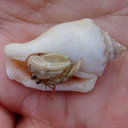Bioactivities and Medicinal Value of Solanesol and Its Accumulation, Extraction Technology, and Determination Methods.
Sleutelwoorden
Abstract
Solanesol, an aliphatic terpene alcohol composed of nine isoprene units, is mainly found in solanaceous plants. Particularly, tobacco (Nicotiana tabacum), belonging to the Solanaceae family, is the richest plant source of solanesol, and its leaves have been regarded as the ideal material for solanesol extraction. Since the discovery of solanesol in tobacco, significant progress has been achieved in research on solanesol's bioactivities, medicinal value, accumulation, extraction technology, and determination methods. Solanesol possesses strong free radical absorption ability and antioxidant activity owing to the presence of several non-conjugated double bonds. Notably, solanesol's anti-inflammatory, neuroprotective, and antimicrobial activities have been previously demonstrated. Solanesol is a key intermediate in the synthesis of coenzyme Q10, vitamin K2, and the anticancer agent synergiser N-solanesyl-N,N'-bis(3,4-dimethoxybenzyl) ethylenediamine. Other applications of solanesol include solanesol derivative micelles for hydrophobic drug delivery, solanesol-derived scaffolds for bioactive peptide multimerization, and solanesol-anchored DNA for mediating vesicle fusion. Solanesol accumulation in plants is influenced by genetic and environmental factors, including biotic stresses caused by pathogen infections, temperature, illumination, and agronomic measures. Seven extraction technologies and seven determination methods of solanesol are also systematically summarized in the present review. This review can serve as a reference for solanesol's comprehensive application.


